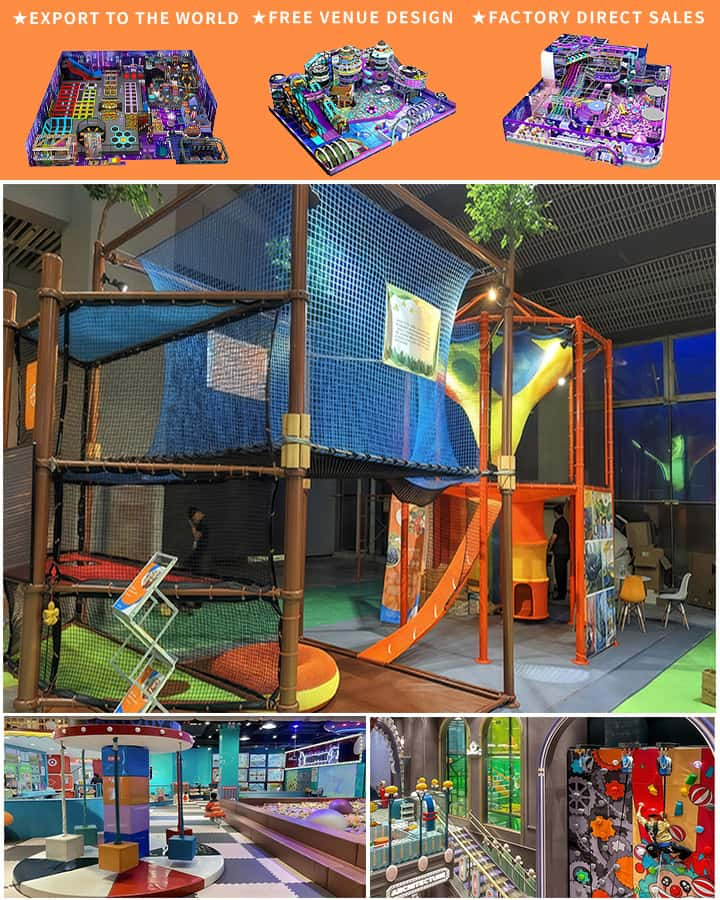When it comes to creating an engaging and profitable indoor commercial playground, selecting the right equipment is paramount. In Canada, where the climate often dictates that outdoor play is not always an option, indoor playgrounds have become a go-to destination for families looking to ensure their children can burn off energy regardless of the weather. This guide delves into the essential aspects of choosing and installing indoor commercial playground equipment in Canada, ensuring both safety and fun for all ages.
Importance of Indoor Playgrounds
Indoor playgrounds offer a controlled environment where kids can enjoy physical activity, social interaction, and creative play. These facilities are especially crucial in colder Canadian winters or on rainy days when outdoor activities are less feasible. They also provide a safe space monitored by staff, reducing parental concerns about safety and supervision.
Key Considerations for Equipment
Safety Standards Safety is the top priority when it comes to playground equipment, especially in a commercial setting where multiple children will be using the apparatus simultaneously. Ensure all equipment meets Canadian safety standards and regulations set by organizations such as the Canada Safety Association (CSA). Non-toxic materials should be used, and equipment should be free from sharp edges or protruding components that could cause injury.
Age Appropriateness The target age group of your playground’s clientele will heavily influence the type of equipment you choose. Toddlers need soft, padded structures and smaller climbers, whereas older children might enjoy more challenging elements like tall slides, climbing walls, and obstacle courses. A well-rounded playground should cater to various age groups, ensuring inclusivity and appeal.
Durability and Maintenance
 Opt for high-quality, durable equipment designed to withstand heavy use. Materials like reinforced plastics and treated wood are ideal choices. Regular maintenance is crucial to keep the playground safe and hygienic. Easy-to-clean surfaces and replaceable parts are beneficial features to look for when selecting equipment.
Opt for high-quality, durable equipment designed to withstand heavy use. Materials like reinforced plastics and treated wood are ideal choices. Regular maintenance is crucial to keep the playground safe and hygienic. Easy-to-clean surfaces and replaceable parts are beneficial features to look for when selecting equipment.Space Utilization Efficient use of space is critical, particularly in urban areas where real estate costs are high. Multi-functional equipment that encourages diverse types of play while occupying minimal space can be highly advantageous. Think vertically with structures that utilize height, such as multi-level play systems.
Themes and Design Incorporating themes can make the playground more engaging and memorable. Whether it’s a pirate adventure, jungle exploration, or space mission theme, integrating design elements that align with these narratives can captivate children’s imaginations. Bright colors, interactive panels, and themed decor add to the sensory experience.
Popular Types of Indoor Playground Equipment
Soft Play Areas Ideal for toddlers, soft play areas include foam pits, ball pools, and soft climbing frames. They provide a safe environment for young children to explore without the risk of serious injury.
Trampoline Parks A favorite among slightly older children, trampoline parks offer a combination of fun and physical exercise. Wall trampolines and interconnected trampolines add variety and excitement.
Climbing Structures Climbing walls, rope ladders, and cargo nets challenge kids physically and help develop coordination and strength. These structures come in various difficulty levels to suit different age ranges.
Slides From spiral slides to straight drops, slides remain a perennial favorite. Ensure they are appropriately angled and equipped with safety rails for younger children.
Interactive Toys Incorporate interactive elements such as touch screens, motion sensors, and sound effects to modernize traditional playground experiences. Interactive toys can also provide educational content, making play time both fun and informative.
Installation and Maintenance Tips
Hiring professionals for installation ensures that all equipment is securely anchored and complies with local building codes. Regular inspections should be conducted to identify any wear and tear or potential hazards. Staff training on spotting issues early and conducting routine checks is vital for ongoing safety.
Conclusion
Creating an indoor commercial playground in Canada involves careful consideration of safety, durability, and entertainment value. By focusing on age-appropriate, high-quality equipment and maintaining it meticulously, you can build a space where children are thrilled to spend their time and parents feel confident about their safety. An indoor playground is not just a business venture; it’s an investment in joy, health, and community well-being. With thoughtful planning and execution, your indoor playground can become a cherished destination for families across Canada.




